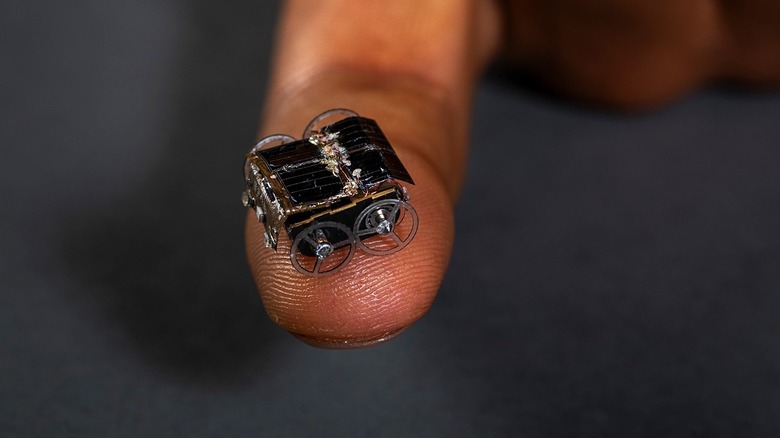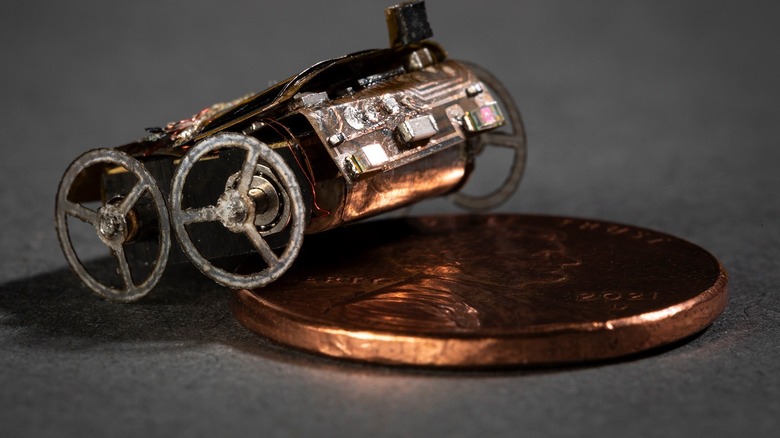This Tiny Self-Driving Robot Is Has No Batteries, Yet Can Run Indefinitely - Here's How
One of the biggest challenges when deploying robots at an industrial scale is their power requirement and ability to navigate spaces that would otherwise not be possible by conventional human-operated machines. In 2021, the experts at Zhejiang University developed a fish-inspired soft robot that was able to navigate the Mariana Trench, but subsequent exploration was held back by the limited-capacity lithium-based battery fitted inside the robot and the challenges of withstanding such extreme conditions of temperature and pressure at nearly 10,000 meters below the sea level.
But it appears breakthroughs are happening fast, with the latest one coming courtesy of experts at the University of Washington. Fittingly named the MilliMobile, this tiny robot is nearly the size of a penny and weighs as much as a raisin, according to the team behind the project. It's a remarkable piece of engineering, and despite its tiny size, it holds a ton of promise, especially in industrial as well as agricultural applications. Furthermore, it isn't reliant on a conventional source of energy. Instead, it can simply harness the light around it to generate power.
The group behind MilliMobile refers to it as "a first-of-its-kind battery-free autonomous robot." One of its biggest achievements is that it manages actuation and motion without requiring an internal power source, like a typical miniaturized battery.
What can a gram-scale robot accomplish?
"A MilliMobile could seek out gas or chemical leaks, identify temperature differences in a space to identify fires, seek out electromagnetic noise to find equipment malfunctions, or sense humidity and soil moisture on smart farms," co-lead author of the paper, Kyle Johnson, tells SlashGear. A doctoral student at the institution's Paul G. Allen School of Computer Science & Engineering, he says the team's at work developing more complex algorithms for a cluster of MilliMobile robots, turning them into a more effective sensing system.
The robot, despite its tiny size and heft, is quite versatile. "Our robot can move at a maximum speed of 5 mm/s, carry payloads up to 3 times its weight, and move on a variety of surfaces ranging from concrete to carpet," the team writes in the research paper. The prototype developed by the team has a chassis that measures only 10x10 mm across and weighs less than 1.1 grams. Interestingly, while carrying a payload as heavy as its own weight, the robot only loses about 25% of its peak speed.
The team also suggests that if a camera sensor is brought into the picture, the MilliMobile could prove to be a potent device for tasks like site inspection, especially those where a human can be at risk. The robot is currently capable of moving towards a light source, but with the introduction of an accelerometer and mobile-inspired wireless localization tech, the MilliMobobile could offer navigation and feedback control, too.
Challenging the power dynamics
While the MilliMobile is an impressive feat of robotics expertise, where it truly stands out is the power system. Or to put it more accurately, it doesn't require one that needs to be plugged into an external outlet to juice up the internal unit. Instead, the team at the University of Washington has armed it with a solar panel-inspired energy harvesting system. Interestingly, it is not solely reliant on sunlight. Instead, it can harvest the light falling on the onboard photodiodes, both from indoor as well as outdoor sources.
This won't be the first machine of its kind. In 2022, scientists at the Indian Institute of Science (Mandi) announced the development of a photovoltaic material that can harness the light produced by household appliances like LED lights and other similar sources. This material is touted to revolutionize the IoT (Internet of Things) segment covering smart home devices that need to communicate with each other seamlessly using a hub, or a remote device such as a smartphone or a tablet.
Coming back to the MilliMobile, its circuit board is equipped with a Bluetooth chip that operates in the 2.4GHz band and can transmit data to a control center up to 200 meters away. When operating in a cluster, the units with higher harvested power act as receivers of data, while those with smaller power reserves act as transmitters.


